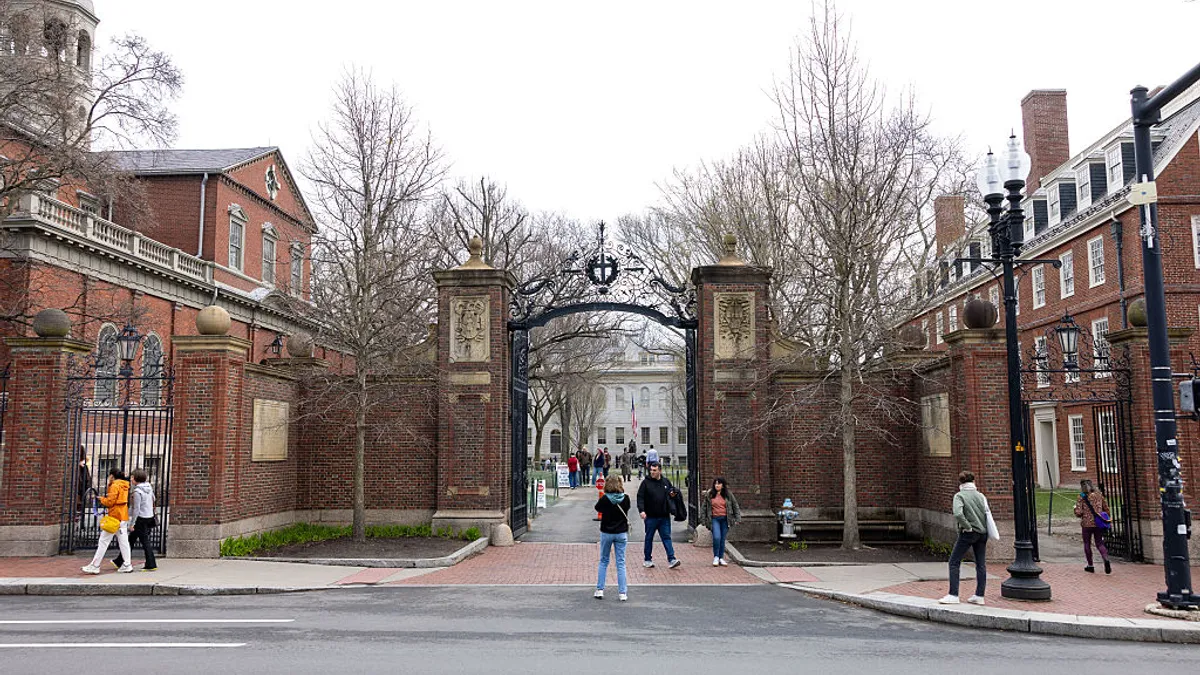U.S. House Education and the Workforce Chair Virginia Foxx (R-N.C.) told an audience gathered in Washington, D.C. for the Council for Higher Education Accreditation this week that there are no additional resources for higher education, and institutions are going to have to learn to be more efficient and better manage what they have.
This is a recurring theme in states across the country. From California, where, despite an outside report showing no waste in the flagship system’s operations, University of California President Janet Napolitano is being told to find ways to cut the operation budget in half. And in Georgia, an aggressive merger plan is being advanced as a cost-savings measure. These trends have leaders everywhere grappling with the new reality.
A major part of the issue, said National Center For Higher Education Management Systems President Sally Johnstone, is that most institutions implemented their current policies in 2011. That's when higher education as a whole was experiencing an enrollment boom, the nation was coming out of the Great Recession, and institutions across sectors were experiencing tremendous growth — as Johnstone put it, “growth was the normal policy” of the day.
Unfortunately, Johnstone said, “none of them have looked at what happens when growth is not the norm.”
Not only that, but the very next year, stuff started “tanking,” she said. “In Pennsylvania, and this is not radically different from some of the other U.S. states, but in 2012 and 2013, they crossed over — their expenditures began exceeding their revenue. And there is no implication that this gap is going to change, unless there are very real changes to the way that the universities ... begin to operate differently.”
Scare pool of resources
Now, Congress is working to take on higher ed reform as part of its package to reauthorize the Higher Education Act, and though much of the 500-plus-page bill leaves higher ed insiders with more questions than answers about what Congress sees as priorities for the industry, it boils down to how to allocate a scarce pool of resources to a burgeoning pool of institutions and other credential providers.
On the one hand, there’s the desire to spur innovation. But on the other, attempts to limit the power of the Executive Branch may slow down an already painfully slow process. These attempts are set forth in the Administrative Procedures Act, as well as proposals in the PROSPER Act — the House version of the HEA approval bill, which would give Congress the right to review any new program or action from the Department of Education before they are made public.
“There's a level of reasonableness and flexibility on the part of the executive branch to implement programs, and they need to have that,” said David Baime, senior vice president for government relations and policy analysis at the American Association of Community Colleges.
However, he said, “I am not convinced that with the Administrative Procedures Act in place, despite all of the issues that some of the Obama-era regulations had for higher education, that this” effort to hamper the ability of the Executive Branch is a good thing. Instead, Baime thinks it will make the process “slower for the department to administer programs, and Lord knows it can be slow enough when they're working full speed ahead.”
However, as Julie Peller, executive director of Higher Learning Advocates, pointed out, despite Congress’s best intentions to move away from standardization and other proposals offering some solutions, the vagueness and ambiguity in the bill may lead to little progress — with accreditors afraid to approve out-of-the-box ideas, and schools and systems scared to try them.
This is largely because of a “lack of common understanding of what our goals of higher education are, or what postsecondary education more broadly is,” said Peller. “It's hard to measure outcomes against a goal that we have not yet defined.”
Putting students first
But as Capella University President Richard Senese posed as a comment from the audience, those definitions can’t be broad-sweeping — even within sectors, institutions are not homogenous — and any definition of success or failure, or examination of outcomes must take into consideration institutional mission, as well as the profiles of students coming onto each campus.
“Healthcare in the past several years has done a great job of taking into account the starting point of where patients come to the provider [from] and looking at outcomes based on that,” said Senese. However, discussions in higher education have been much more broad sweeping, and lacking “a real nuanced conversation about outcomes that take into account missions, where students are starting from."
This is largely why Association of Public and Land-grant Universities President Peter McPherson said last year that there is a financial disincentive to enroll more high-risk students. And with data showing that higher education as a whole is doing an even worse job retaining and graduating all students enrolled than was previously thought, many institutions will likely reconsider their policies to take risks on students in the spring or summer semesters, because there’s no longer the security that these learners won’t be counted in the data given the federal push towards using the “all students” metric.
“We have to recognize that will impact how we look at outcomes for these institutions,” said Senese, who argued that “the output [targets] needn't be the same for every institution,” because not all institutions set out to do the same thing. Instead, he proposed a system that considers success based on the institution’s ability to “fulfill its mission” rather than a blunt one-size-fits-all metric that looks at graduation rates or salaries upon graduation in isolation.
“It's likely more complex than that, and it ought to be — we have a complex community and a complex society,” he said.





















